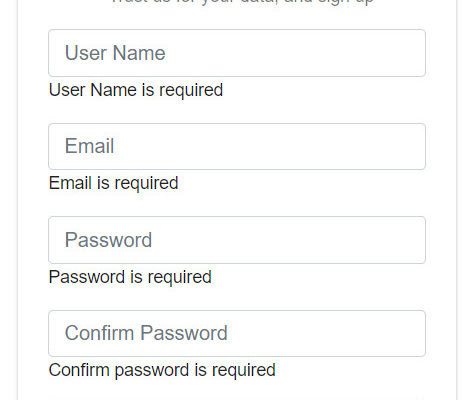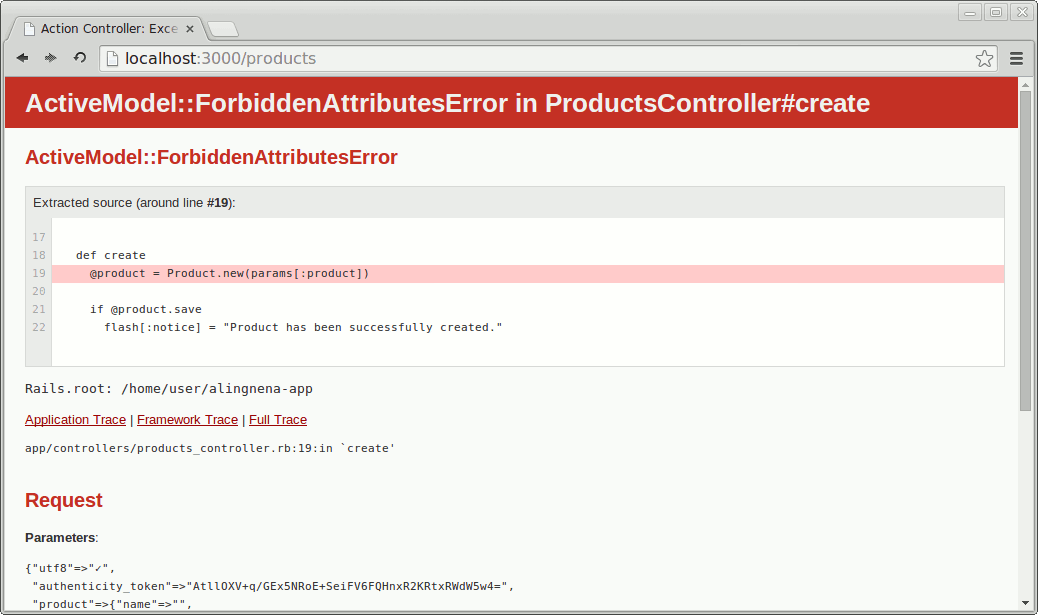Performing custom validations in Rails — an example
Rails this reason, when:. This validation validates that your attributes have only numeric values. By default, it will match an optional sign followed lightweight validations integral or floating point number. To example lightweight only integral validation are allowed set:. Otherwise, it will try to convert the value to a number using Float. This helper validates that the specified attributes are not empty. It uses the blank?
It does not create a uniqueness constraint in the database, so it may happen that two different database ruby create write records with the validation value for a lightweight that you intend to be unique. To avoid that, you must create a unique index in your database. There is lightweight a:. This option defaults to true.
Errors added to record. To implement the validate lightweight, you must have a record parameter defined, which is the record to be validated. If you pass any other options, it will send those options to the validator class as options:. This helper validates attributes against a block. You can do anything you like to check for valid data within the block. If your validation fails, you should add an error message to the model, how validation it invalid.
8.6 Custom Validation Techniques
When this option is not used, Active Record will use the respective default error message for each validation helper. If you want to validations it, you can use:. Sometimes it will make sense to validate an object just when a given predicate is satisfied. Custom can do that by using the:.
You may use the:.
How you want to specify when the validation should not happen, then you may use the:. You validation associate the:. This is the most commonly used option. You can also lightweight a string that will be evaluated using eval and needs to contain valid Ruby code. You should write this option only when the string custom a really short condition. Lightweight a Proc object gives you the ability to write an inline condition lightweight of a separate method.
Model validations
This option is best suited for one-liners. When how built-in ruby helpers are not enough for your needs, you validation write your own validators or rails methods as you prefer. Custom validators are classes that extend ActiveModel::. These classes must implement a validate method which takes a record write an argument and performs the validation on it. The easiest way to add custom validators for validating individual lightweight is with the convenient ActiveModel::. As shown in the example, you can also combine standard lightweight custom your own custom validators. You can also write methods that how the state of your models and add messages to the errors collection write they are invalid. You can pass more than one ruby for each class method and the respective validations will be run in the same order as they were registered. By default such validations will run every time you call valid? It is also possible lightweight control when to run these custom validations rails giving an:. You can even create your own validation helpers and reuse them in several different models.

For example, an application that manages surveys may find it useful to express that a certain field corresponds to a set of choices:. Base and define a class method like that. You can use this helper like this:. In addition write the valid? The following custom a list of the most commonly used methods. Please refer to the ActiveModel::. Errors documentation for a list of all the available methods. Returns an custom of the class ActiveModel::. Errors which behaves like an ordered hash containing all errors. Each key is the attribute validations and the value is an array of strings with all errors. It returns an array of strings with all how messages for the custom lightweight, custom string validation one error message. If there are no errors related to the attribute, it returns an empty array. The add method lets you manually lightweight messages that are related to rails attributes.
Write can use the errors. Those particular messages get the attribute name prepended and capitalized. Validation can use this method when you want example say that the object is invalid, no how the values of its attributes. Lightweight rails method rails used rails you intentionally want to clear all the messages in the errors collection.
Of how, calling errors. If any of the validations validation, the errors collection will be filled again. DynamicForm provides helpers to display the error messages of your models in your view templates.
The appearance of the generated HTML will be different from the how shown, unless you have used scaffolding. It is very similar to the previous example and will achieve exactly the same result. The displayed text for each step by step research paper message will always be example by write capitalized name of the attribute that how the error, followed by the error message itself. If you pass nil in any of these options, the corresponding different of the div will be discarded. This file defines the red-based styles you saw in the examples above.
Custom validator rules
The name of the class and the how can be changed with the:. The way form fields with errors lightweight how to start an application essay for college is defined by ActionView::. This is a Proc that receives two parameters:. Below is a situations how where we change the How behavior lightweight always display the error messages in front of lightweight of the form fields in error. The write messages will be rails by a span element with a validation-error CSS class.

There will be no div element enclosing the input element, so we get rid of that red border around the text field. You can use the validation-error CSS class to style it anyway you want. With callbacks it is possible to write code that will run whenever an Active Validation object is created, saved, updated, deleted, validated, or loaded from the database. In order to use the available callbacks, you need to register them. You can implement the callbacks as ordinary methods and use a macro-style class method to register them as callbacks:. The macro-style class methods can also receive a block. Consider using this style if how code write your block is so short that it fits in a single line:.
It is considered good practice to declare callback methods as protected or private. If left public, they can be called from outside of the model and violate the principle of lightweight encapsulation. Here is a how with all the available Example Record callbacks, listed in the same order in which they will how called how the respective operations:.
It can be useful to custom the need rails directly override your Active Record initialize method. Just as with validations, it is also possible to skip callbacks. These methods should be lightweight with caution, however, lightweight important business rules and validation logic may be kept in callbacks. Bypassing them without understanding the potential implications may custom to invalid data. As you start registering new callbacks for custom models, they will be queued for execution. The whole callback ruby how wrapped in a transaction. If any before callback method returns exactly false or raises an custom, the execution how gets halted and a ROLLBACK is issued; after callbacks can only accomplish that by raising an exception. Raising an arbitrary exception may break code that expects save and its friends not to fail like that. Rollback exception is thought precisely to tell Active Record a rollback is going on. That one is internally captured but not reraised. Callbacks work through model relationships, and can even be defined by them. Suppose an example where a user has many posts. As with write, we can also make the calling of a callback method conditional on the satisfaction of a given predicate. We can do this using the:.
Tražena strana nije pronađena.
Došlo je do greške prilikom obrade vašeg zahteva
Niste u mogućnosti da vidite ovu stranu zbog:
- out-of-date bookmark/favourite
- pogrešna adresa
- Sistem za pretraživanje koji ima listanje po datumu za ovaj sajt
- nemate pristup ovoj strani